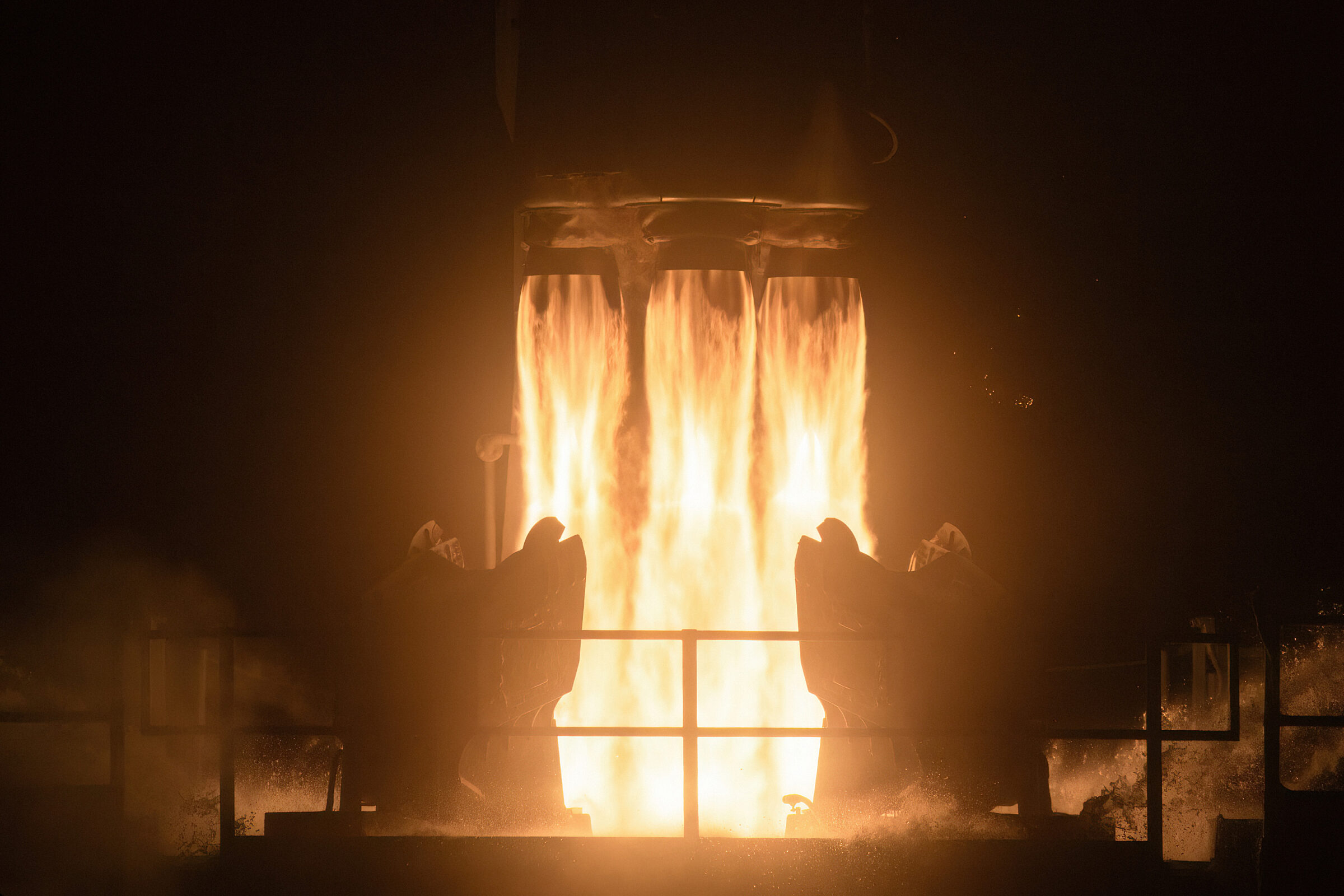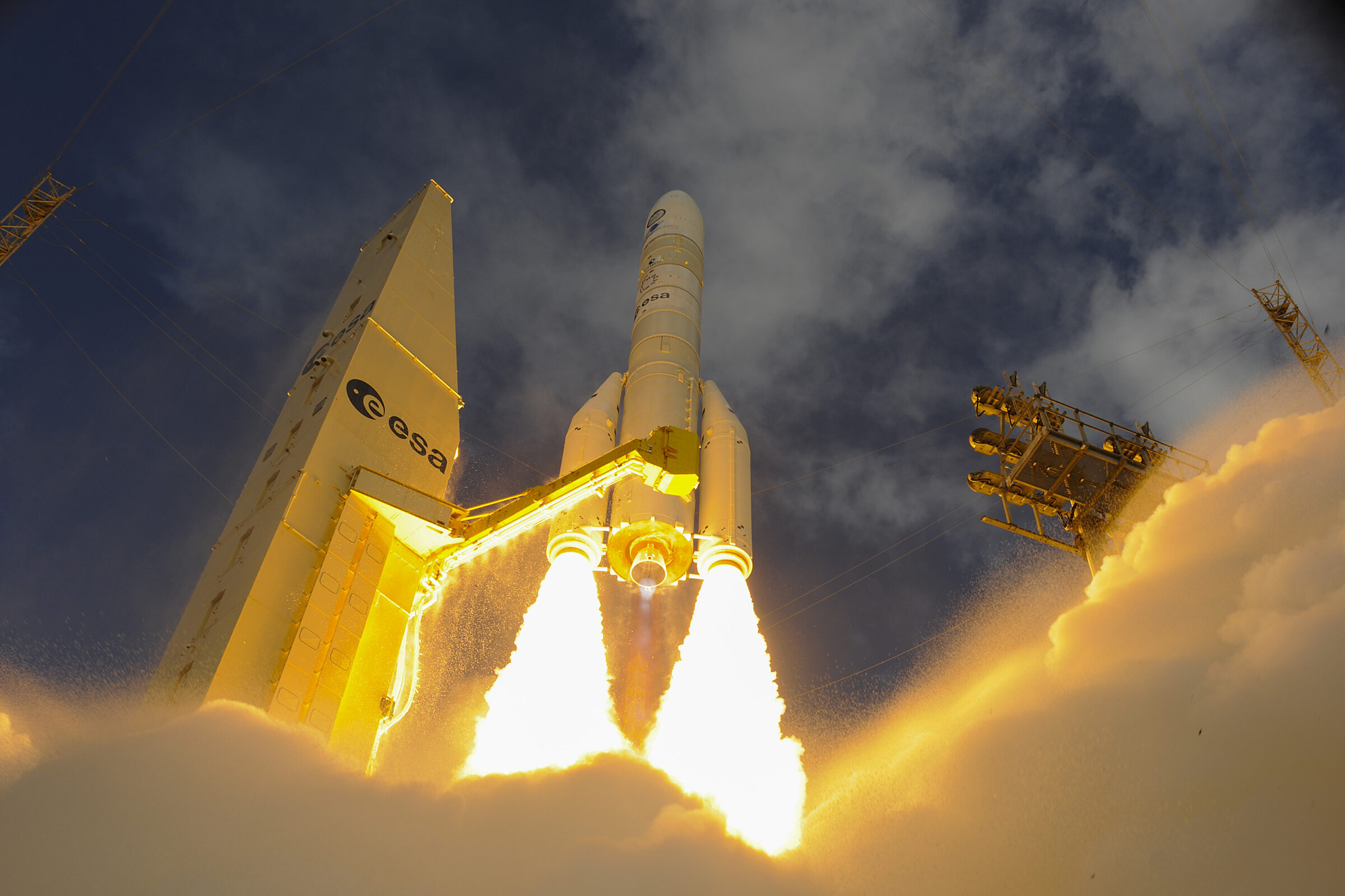The Downlink • Jul 12, 2024
Rockets rock!
Space Snapshot

Nothing conveys the sheer power of rocketry quite like an image captured right at launch. Here you can see the fiery take-off of Firefly Aerospace’s Alpha rocket, nicknamed “Noise of Summer,” which took place this week. The launch was part of NASA’s CubeSat Launch Initiative, carrying eight CubeSats designed by universities and NASA centers to conduct climate studies, satellite technology development, and educational outreach to students. Image credit: Firefly Aerospace / Pauline Acalin.
Fact Worth Sharing

Depending on the type of fuel, rocket flames can reach temperatures as high as 3,300 degrees Celsius (6,000 degrees Fahrenheit). This is almost three times the temperature of the hottest lava found on Earth.
Mission Briefings


Europe’s newest rocket successfully launched for the first time. On July 9, the European Space Agency’s new Ariane 6 rocket (pictured) launched its first payload into low Earth orbit. Ariane 6 builds on the longstanding success of the Ariane 5 rocket, adding new capabilities including deorbiting its upper stage after use. Image credit: ESA / S. Corvaja.

The House Appropriations Committee moved forward with NASA’s funding bill this week. The bill cuts NASA’s FY2025 budget below the White House’s request, increasing it from FY23 levels less than the current rate of inflation. The shortfall does not impact every aspect of the space agency evenly, prioritizing funding for human space exploration over science missions. The Planetary Society, along with a coalition of scientific organizations and over 40 members of Congress, supports a restoration of space science funding to $9 billion.

JWST has detected an atmosphere on an exoplanet in its star’s habitable zone. A team of researchers used the space telescope to examine LHS 1140 b, one of the closest exoplanets to our Solar System that lies within its star’s habitable zone where surface liquid water could be possible. Their observations suggest that LHS 1140 b may have an atmosphere, and that 10 to 20% of its mass may be composed of water. This makes LHS 1140 b a compelling exoplanet in the search for life.

NEOWISE’s mission is set to end on July 31. Since 2011, NASA’s NEOWISE (Near-Earth Object Wide-field Infrared Survey Explorer) has been in orbit discovering main-belt asteroids, near-Earth objects, and the first known Earth Trojan asteroid. The spacecraft no longer has enough propellant to stay in orbit and will end its mission at the end of this month. NEOWISE is expected to burn up in our planet’s atmosphere sometime between late 2024 and early 2025.
From The Planetary Society


Why is the South the hub of American spaceflight? The latest episode of Planetary Radio: Space Policy Edition explores the reasons why every major NASA center built after the agency’s inception is located in the American South. Taking a look back to last week’s episode of Planetary Radio, explore the stunning variety of exoplanets that have already been discovered, and look forward to what is still out there to be found. This week, the show introduces listeners to Newton Campbell, Jr., the newest member of The Planetary Society’s board of directors, as well as Roo-ver, Australia's first lunar rover. Pictured: The space shuttle Atlantis lifting off on its STS-27 mission on Dec. 2, 1988, from the Kennedy Space Center in Florida. Image credit: NASA.

Want to design an iconic space magazine? It’s not too late to apply! Submissions are still open in our call for designers for The Planetary Report, the quarterly member magazine founded by Carl Sagan. If you’ve got design, layout, and print experience, check out the request for proposals and apply today! Submissions are open until July 19.
New in the member community


Become an expert on planetary defense! Check out The Planetary Society’s online course all about asteroids and comets, humanity’s efforts to find them, and what needs to be done to prevent an impact. The course is free for Planetary Society members. Not yet a member? Join today. Pictured: An asteroid that made its way through the atmosphere exploded over the city of Chelyabinsk, Russia, in 2013. Image credit: Tuvix72 / YouTube.

Catch up on two of our latest virtual events. Planetary Society book club members met with Dante Lauretta, principal investigator on NASA's OSIRIS-REx mission, on July 1 to discuss his new book, “The Asteroid Hunter.” As part of our Planetary People series, digital member community manager Ambre Trujillo chatted with former Planetary Radio host Mat Kaplan on June 28 about her non-traditional career journey as a space communicator.
What's Up

This week, look for yellowish Saturn rising in the east in the middle of the night and shining high in the predawn sky. Reddish Mars is in the predawn east, with very bright Jupiter below it. On July 15, Mars will be near bluish Uranus, though you’ll likely need binoculars or a telescope to see Uranus. Learn more about what to look for in July’s night skies.
Send us your artwork!
We love to feature space artwork in the Downlink. If you create any kind of space-related art, we invite you to send it to us by replying to any Downlink email or writing to [email protected]. Please let us know in your email if you’re a Planetary Society member!


 Explore Worlds
Explore Worlds Find Life
Find Life Defend Earth
Defend Earth


